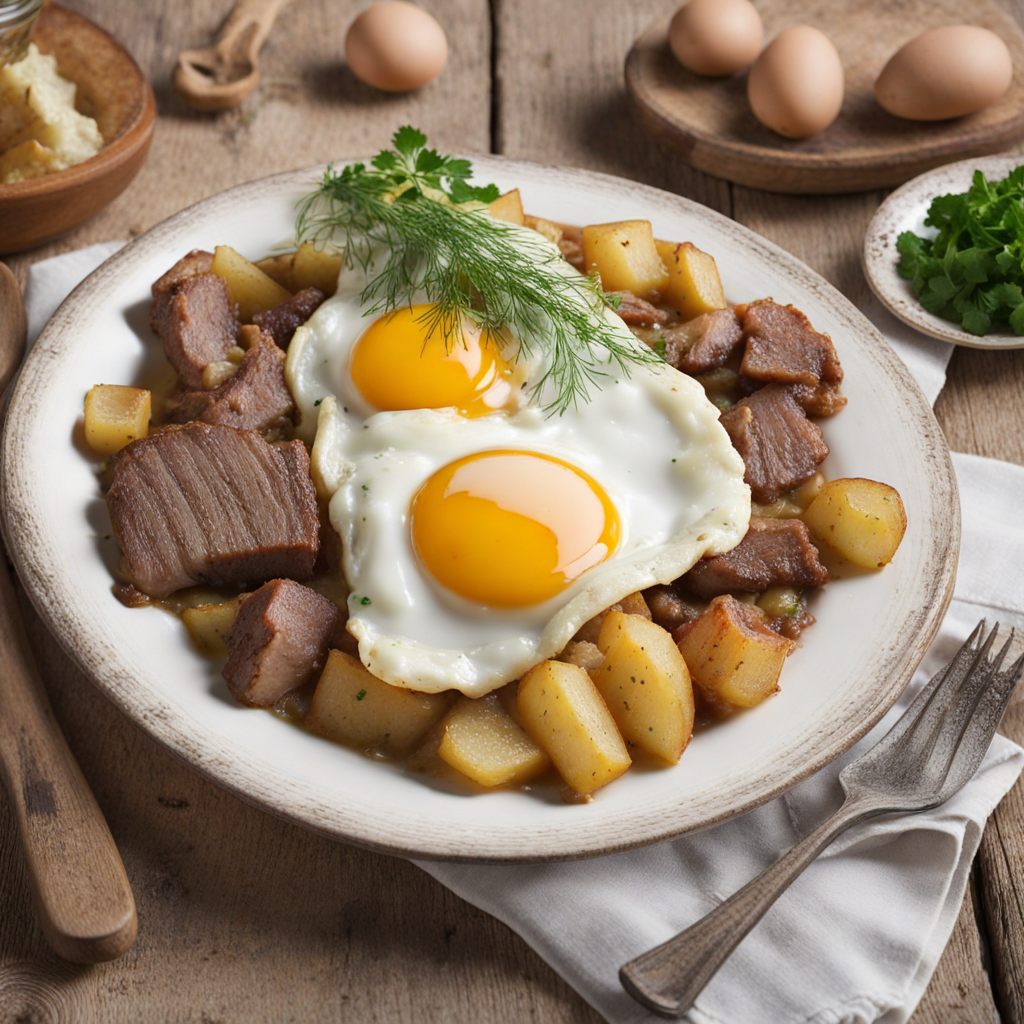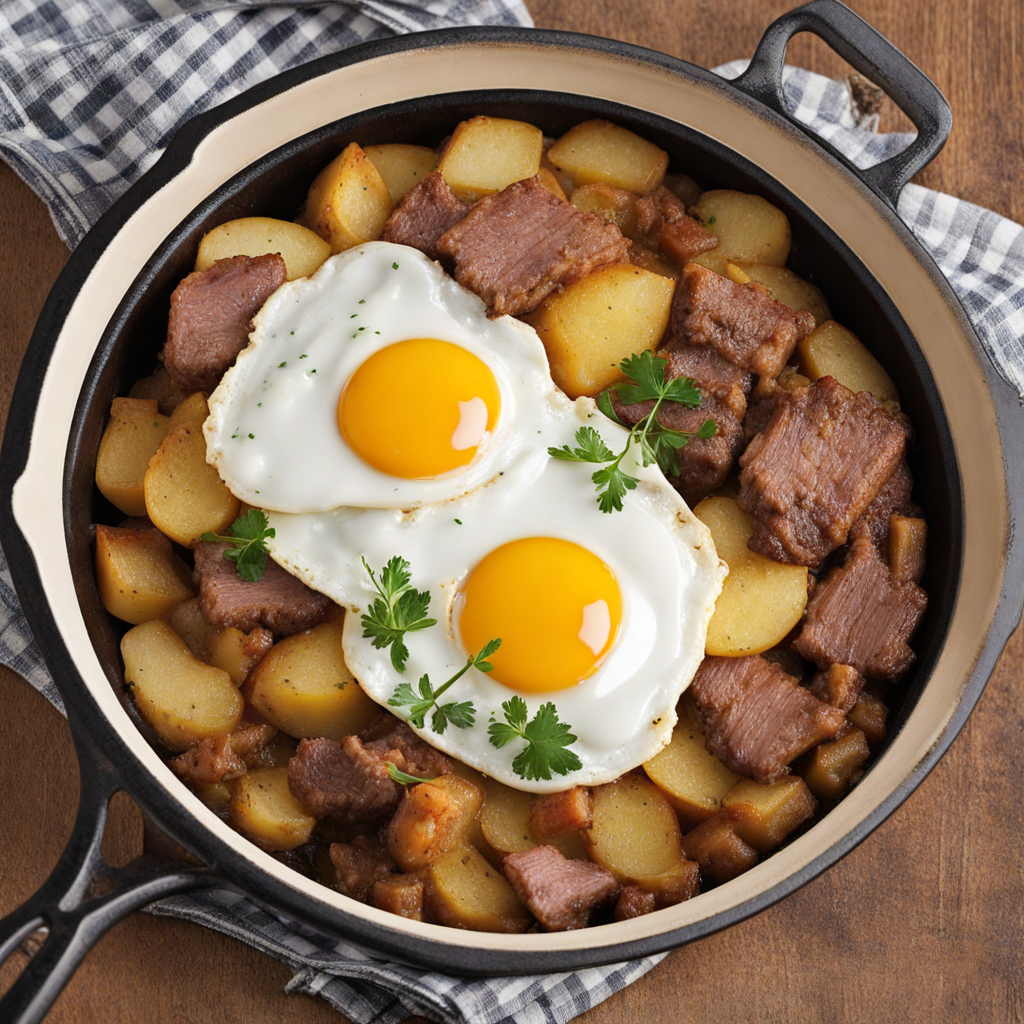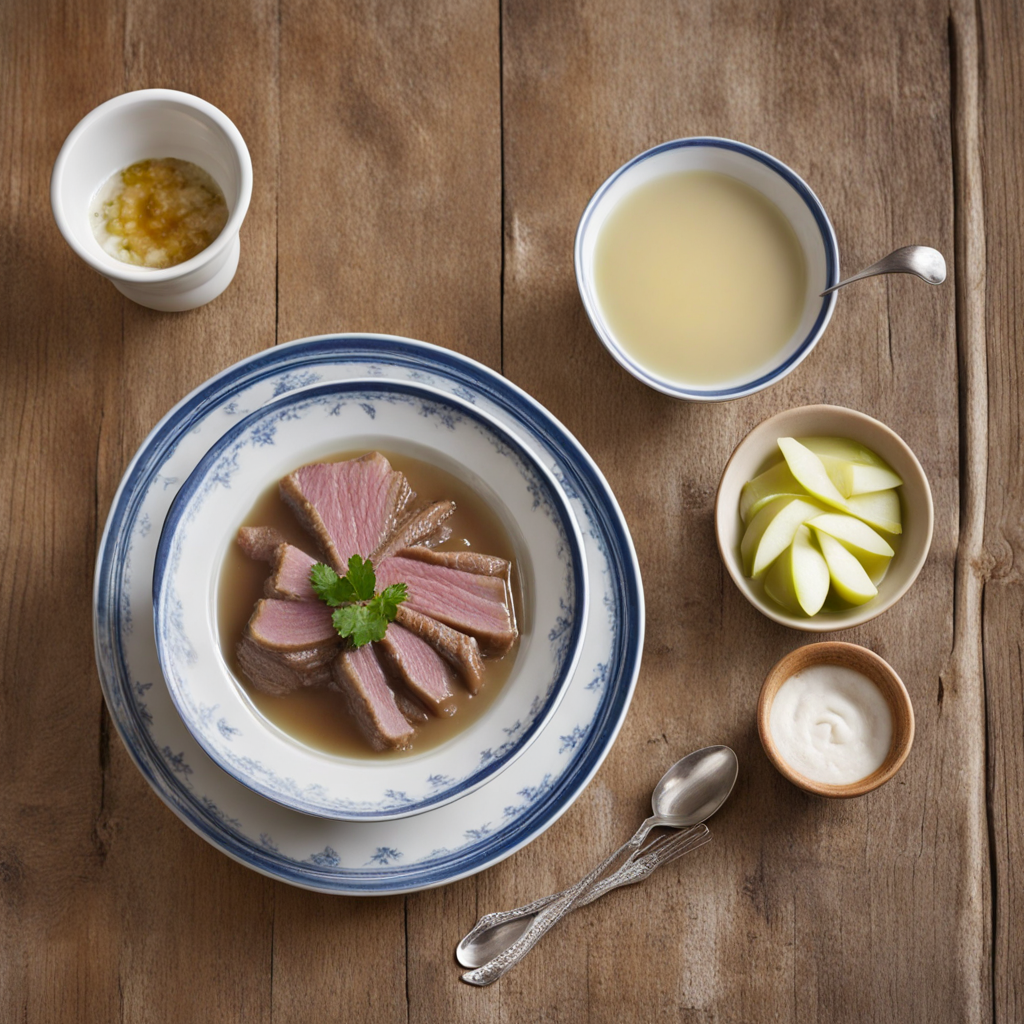Gröstl
Gröstl is a traditional Austrian dish that embodies the rustic charm of alpine cuisine. Typically, it consists of a hearty mix of pan-fried potatoes, onions, and either beef or pork, all cooked together in a skillet until golden and crispy. The potatoes are often sliced or cubed, offering a delightful texture that contrasts beautifully with the tender meat. Each bite is a harmony of flavors, with the savory richness of the meat complementing the earthy notes of the potatoes, while the caramelized onions add a touch of sweetness and depth to the dish. One of the defining characteristics of Gröstl is its versatility, as it can be easily adapted to incorporate a variety of ingredients. Some versions include additional vegetables such as bell peppers or mushrooms, while others might feature different cuts of meat, or even go vegetarian by using mushrooms and hearty greens. This adaptability allows for a unique personal touch, making it a favorite amongst home cooks and chefs alike. The dish is typically seasoned with salt, pepper, and a hint of paprika, enhancing the natural flavors without overwhelming them. Traditionally served with a fried egg on top, Gröstl is often accompanied by a side of pickles or apple sauce, providing a refreshing contrast to the richness of the dish. The combination of the crispy potato base with the luscious yolk creates a comforting and satisfying meal that is perfect for any time of the day, whether it's a hearty breakfast or a cozy dinner. Gröstl truly captures the essence of Austrian comfort food, making it a must-try for anyone looking to explore new culinary delights.
How It Became This Dish
Gröstl: A Culinary Journey Through Austria's Heartland Gröstl, a hearty dish originating from Austria, particularly the Tyrol region, is a perfect representation of the country's rich culinary heritage. This dish, often made with leftover meats, potatoes, and onions, embodies the principles of resourcefulness and comfort in Austrian cooking. To understand Gröstl fully, we must delve into its origins, cultural significance, and the evolution of this beloved dish over the years. Origins of Gröstl The roots of Gröstl can be traced back to the 19th century, a time when Austria was a significant player on the European stage, both politically and culturally. The dish is believed to have originated in the alpine regions, where farming and herding were prevalent ways of life. The mountainous terrain and the harsh winters necessitated a diet that was not only filling but also utilized whatever ingredients were available. Traditionally, Gröstl was a way for families to make use of leftover roast meats, particularly pork or beef, that might have been served during a Sunday feast. This practice of repurposing leftovers aligns with the broader European tradition of creating "hash" dishes, where meat is diced and fried with potatoes and vegetables to create a flavorful meal. In Austria, Gröstl became an emblem of rustic cooking, showcasing the simplicity and heartiness that defined Tyrolean cuisine. Cultural Significance Gröstl is more than just a meal; it holds a special place in the hearts and homes of Austrians. It is often associated with gemütlichkeit, a German word that embodies a sense of coziness and warmth. The dish is typically enjoyed in a communal setting, making it a staple at family gatherings, ski lodges, and rustic taverns. In this sense, Gröstl serves not only as nourishment but also as a catalyst for social interaction, bringing people together in a shared experience. In Austria, food is often tied to national identity. Gröstl embodies the spirit of the country’s culinary philosophy: hearty, local, and uncomplicated. It reflects the agricultural roots of the region, relying on ingredients that are easily sourced from local farms. The dish is often served with a fried egg on top, which adds a luxurious touch to its rustic base, making it a popular choice for breakfast or lunch. The Development of Gröstl Over Time As Austria evolved through the 20th century, so too did Gröstl. The post-war years saw a resurgence of interest in traditional dishes as people sought comfort in familiar flavors. Gröstl made a comeback in households across the nation, often adapted to suit the changing tastes and availability of ingredients. The rise of tourism in the Austrian Alps brought Gröstl to a wider audience. Ski resorts and mountain huts began offering the dish, presenting it as a hearty option for weary skiers in need of sustenance. This exposure helped solidify Gröstl's place in Austrian cuisine, and it became increasingly popular not only among locals but also among international visitors. In contemporary Austrian cuisine, Gröstl has seen various interpretations. While the traditional recipe remains popular, chefs have begun to experiment with different ingredients and presentation styles. Modern variations of Gröstl might include seasonal vegetables, different types of meats, or even vegetarian versions utilizing mushrooms and plant-based proteins. These adaptations reflect a growing awareness of dietary preferences and the desire for innovation within traditional frameworks. Gröstl in the Culinary Scene Today Today, Gröstl is a celebrated dish found in many Austrian restaurants, from casual eateries to upscale dining establishments. Its appeal lies in its versatility; it can be served as a comforting dish in a rustic setting or presented as a refined plate in a gourmet restaurant. Chefs often take pride in sourcing local ingredients, emphasizing the importance of quality in this beloved comfort food. In addition to its presence in restaurants, Gröstl has also made its way into home cooking. Many Austrians have their own family recipes, passed down through generations, which often include personal touches that reflect individual tastes or regional differences. The dish is frequently prepared during colder months, as it not only provides warmth but is also a filling meal that can easily feed a family. With the rise of food culture on social media platforms, Gröstl has gained visibility beyond Austria’s borders. Food enthusiasts and travelers share their experiences of enjoying this dish, contributing to its growing recognition globally. This newfound popularity has led to a revival of interest in Austrian cuisine as a whole, encouraging people to explore the country’s diverse culinary landscape. Conclusion Gröstl is more than just a dish; it is a reflection of Austria's cultural identity and culinary history. From its humble beginnings in the alpine regions to its status as a beloved comfort food, Gröstl tells the story of resourcefulness, community, and the enduring appeal of traditional cooking. As Austria continues to evolve, so too does Gröstl, adapting to modern tastes while remaining rooted in its rich heritage. In a world that often prioritizes fast and convenient meals, Gröstl serves as a reminder of the importance of savoring food that nourishes not just the body but also the spirit. Whether enjoyed in a cozy mountain hut or prepared at home, Gröstl remains a cherished dish that connects generations and celebrates the simple joys of good food.
You may like
Discover local flavors from Austria







